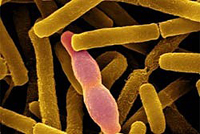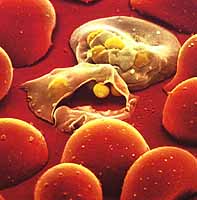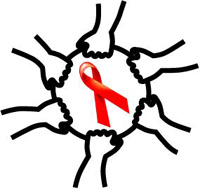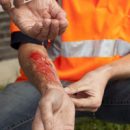What other infections cause a cynical wand? How they manifest? Answers to these questions you will find in the article.
Content
Eye infection caused by a blue chopstick
Sinyna wand causes inflammation of the horn shell of the eye (keratitis) and purulent inflammation of the inner shells of the eye (endophthalmite). With the smallest eye injury, this bacterium penetrates through a defect in the cornea of the eye.

The cause of keratitis can be contact lenses, especially soft lenses for long-term wearing.
The source of infection is the lenses themselves and solutions for the care of them. In addition, the inflammation of the horny shell of the eye is often evolving after radioactive exposure of the eyes, in victims of heavy burns and in patients who are in resuscitation departments, especially unconscious .
The disease usually begins with a small ulcer in the center of the cornea, which expands and captures most of the cornea and sclera. Gradually on the surface of the ulcers is formed a purulent-mucous fall. A ulcer can capture the entire cornea in less than 2 days, however, with a subacute course it grows much slower. General condition is usually not violated.
Purulent inflammation of the inner shells of the eye (endophthalmite) occurs when the eyes penetrating injuries, after intraocular operations, with keratitis, complicated by perforation, and when the blue bloodstand is propagated with blood.
Usually endophthalmites quickly progresses. Save vision succeed only by starting treatment immediately.
Symptoms of the disease include pain in the eye, redness of the eyes, edema, decrease in visual acuity,
Smoking pus directly in front of the iris, and t.D.
Osteomyelitis caused by a blue rod
Osteomyelitis of the spine caused by a blue rode complicates infections
urinary tract, instrumental research and surgical interventions on urinary tracts and
genital organs. It is found mainly from the elderly and amazes lumbosacral department.
In addition, injection drug addicts who suffer from cervical and
Lumbeln-sacral spine.
Pseudomonad osteomyelitis of the spine develops unnoticed. Therefore, the diagnosis is pushed
weeks and months after the start of the disease.
First arises pain in the neck or back pain. Fever and other general symptoms are infrequent. Characteristic pain in the area of affected vertebrae and restriction of movements.
X-ray methods are used for diagnosis, but the most sensitive methods of diagnosis - computed tomography (CT) and magneto-resonant tomography (MRI).
Current information is usually given bone scintigraphy.
To determine the causes of osteomyelitis, sowing. Material for it is obtained by puncture or
Exhaust biopsy conducted under x-ray control. May require an open
biopsy.
Arthritis caused by a blue chopstick
Injecting drug addicts occurs the purulent arthritis of the breast joint, sometimes in combination with endocarditis . Usually amazed one joint. Several less often observed arthritis of breast and ribs.
In arthritis there is pain in the joint area and restriction of shoulder mobility, often fever . These symptoms are usually held by months, but sometimes the course of arthritis is sharp.
It is observed pain, redness and swelling of the affected joint .
Radiographs are visible changes in the affected joint.
When sowing a liquid from a suspended system or biopsy material, a cynical wand is detected.
Symphysuit caused by a blue rod
Pseudomonade infection of the pubic articulation occurs after surgical
interventions on the organs of a small pelvis and injecting drug addicts. Lobochie articulation (Symphiz)
Especially subject to infection with a blue blood stick.
For inflammation of the pubic articulation (symphizitis), pain in groin, pain in the hip, pain in the area of hip joint and pain at the bottom of the abdomen, increasing when walking. Fever is not always. Until the diagnosis is sets from several days to several months.
For diagnostics use X-ray research method. Informative and scintigraphy
Bone.
To get a material for sowing, a puncture is needed or percutaneous biopsy. Only sowing
allows you to distinguish bacterial symphyzit from other diseases.
Osteochondrite of the feet caused by a blue rod
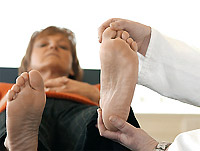
The osteochondrite caused by the cynical wand (inflammation of the dice adjacent to the cartilage, navigating the bones of the feet arises as a complication of the wound wounds and is found primarily in children. Proximal phalanxes are affected, tie bones,
Plus snowlangelading joints, bones are replous, heel bone, other small joints and foot bones.
The disease on average lasts several weeks. The general condition is usually not violated.
Characterized with persistence, inflammation of surrounding soft tissues. Usually,
Informative radiography and scintigraphy bones.
The puncture of the affected joint is obtained by a pus, in which they detect a cinema wand (painting of smears in gram, sowing).
Infection of the gastrointestinal tract
The cynical wand causes infection of any departments of the gastrointestinal tract - from the rotogling to the rectum. Most often they are found in infants and adults with a sharply reduced immunity. With prolonged stay in the hospital and under the influence of antibiotic therapy there is a cinema sticks in a colon. When imminent immunity (for example, due to chemotherapy), bacterium penetrates from the colon in the bloodstream.
The cynical wand causes necrotic enterocolitis (inflammation of the thin and tussan intestines) in infants and oncological patients. Most often the ileum, blind and colon. In the mucosa appear hemorrhages and ulcers. When the lesion spreads to the submucosal layer, the bacteria penetrate into the blood vessels, and distributed by the body. The damage to the muscular and serous shell of the intestine leads to perforations and peritonitis. Similar ulcers are sometimes found in the rotoglot, esophagus, stomach and small intestine.
The inflammation of the blind intestine (tiflite) is a disease that is found mainly in patients with leukozami - accompanied by necrosis and gangrea wall of the blind intestine. Its causative agent in most cases is a sinic stick.
Typhlite often leads to the perforation of the intestine, peritonitis and death.
The cynical wand also serves as the most common cause of paraproatitis in oncological patients.
Urinary tract infections caused by a blue rod
Sinnaya wand - the most common cause of secondary urinary tract infections. They develop when installing the blade of the blade, instrumental studies, surgical
interventions or on the background of urinary tract obstruction, urolithiasis, chronic prostatitis. Such infections are often chronic or repeated.
Possible skid of the blue wand with blood in the urinary tract, but it happens more often -
Urinary tract infection causes this bacterium to get into blood.
Chronic infections of urinary tract relative to frequent among those who have undergone reconstructive operations on urinary tracts, patients with a long term foulted catheter, as well as among patients with paralysis.
Urinary tract infections are characterized by a protracted, repeated and chronic current, as well as
Resistance to antibacterial therapy. Sometimes there is only a sinic stick
Defeat - ulcers on the mucous membranes of the renal pelvis, ureters and bladder.
Skin and soft tissue infections caused by blue
chopper

The cynical wand easily penetrates into damaged skin, infecting wounds, burns, trophic ulcers, breakdowns and affected by one or another dermatosis. Development of infection
The wet environment is promoted (which is created, in particular, under wet diapers in infants) and reduced immunity.
In patients with third degree burns, a siny wand causes a burning sepsis. She is examined
Burning wounds penetrates under the stamp, to the dermis, is introduced into the blood vessels and enters the bloodstream. The development of sepsis, in addition to a skin malfunction, contributes to antibiotic-resistant species of the blue stick and the peculiar to the burning disease. Immunity . In the development of Strap infection, it acquires a black, dark, or purple color, deep-haul tissue is destruction, hemorrhages and premature crust rejection are observed. Edema, hemorrhage and destruction apply to the surrounding skin, redness appears on healthy areas. Over the burn wound is the formation of a new crust (stamp) of black or brown. Fever is observed (or decrease in body temperature), disorders of consciousness, urine delay, pressure reduction, sometimes respiratory failure or pneumonia . The diagnosis of pseudomonade sepsis is made on the basis of the described clinical picture and the burning wound biopsy.
When sowing a biopsy material, a cynical wand is found.
Hot bath, shower, jacuzzi, swimming pool, seamined by a blue rod can become
The cause of inflammation of hair follicles (folliculitis) - disease occurring with itching rashes.
There are at least two hospital flanks of folliculite caused by a blue rod. In one of them, the source of infection served as a fluid swimming pool. Rash occurs only in areas of leather covered with a bathing suit, or spreads out of their limits, not capturing only her head and neck. Possible equipment, headache, ears pain, rubbing and burning in the eyes, nose, throat, lactinating of the mammary glands, gravating abdominal pain. Occasionally there is a subfebrile temperature. The disease usually passes independently, if you stop contacts with the source of infection. True, in one of the hospital outbreaks among people with a weakened immunity, there was a transition of pseudomonade folliculite to the gangrenous ecctime.



